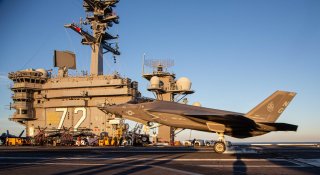Are America's Airpower Theorists in Hiding?
A century into the air age, few would dispute the importance of aviation to military operations.
Corbett divined a hierarchy among the elements of the navy. Military forces exist to fight, don’t they? That would imply that capital ships, the fleet’s heavy hitters, embody the navy’s purposes. Wrong, says the English theorist. Capital ships may be the fleet’s chief repository of combat power, and they may exude sex appeal because they are big and impressive, but he insisted they’re support ships! Defeating the enemy fleet, he says, is merely an enabler for all good things that follow. Cruisers patrol the sea and project power, exercising command, while flotilla vessels carry out mundane functions. These ships—not ships of the line, the glamour ships—are the ones that perform the “special work” that constitutes the true purpose of naval strategy. Capital ships are merely their guardians.
Now substitute air for sea, aircraft for ship, air force for navy. Teleporting Corbett’s ideas skyward reveals that air forces contest and confound enemy air superiority when weaker, fight for air superiority or supremacy when able, and reap the benefits of aerial command once it has been won. Lending close air support to ground forces is something air forces that attain superiority or supremacy do. It ranks among the true purposes of airpower, much as bombarding foreign shores from the sea represents one of the true purposes of sea power. Fighter aircraft vie for aerial command and thus equate to capital ships of the sky. By Corbett’s logic they are the protectors of aircraft that exploit command of the air—including the ground-attack contingent, the aerial counterpart to cruisers or flotilla ships.
Here’s the rub, though. Like command of the sea, command of the air may be incomplete, impermanent, or both. A defeated foe may still have options. Its air force may have been driven off yet escape destruction to fight again another day. The vanquished could rebuild. They could find allies boasting strong air forces of their own. Thus the fighter community’s work is never done. Ground-attack planes could find themselves in trouble from hostile aircraft or ground fire. At that point fighters must resume their all-important support function, succoring their vulnerable brethren and thence the army. They resume the struggle for air supremacy just as a navy’s battle fleet may find itself forced to renew the fight against a rejuvenated enemy fleet.
Close air support in embattled skies most closely resembles a close naval blockade of coasts that bristle with gun batteries and may harbor fugitive enemy ships intent on breaking the blockade or denying the triumphant fleet the harvest of victory at sea. Naval commanders wouldn’t withdraw the battle fleet from such a scene even after trouncing the enemy in action. They would instruct the fleet to remain vigilant in case cruisers and flotilla craft needed protection afresh. Similarly, air commanders ought not assume they are entitled to permanent, absolute air supremacy by virtue of a victorious air battle. Instead they should choreograph operations so fighter forces are positioned to defend aircraft performing their special work. In other words, they must manage the symbiosis among the components of the air force.
Bottom line, the elements of air forces are interdependent just as capital ships, cruisers, and flotilla craft prowling the sea are interdependent. To circle back to where we started, the U.S. Air Force should evaluate candidates for the light-attack mission as part of a larger flying force—not as aircraft that must fight or die bereft of support from fellow airmen. Surveying them in a vacuum begets an abstract, artificial, and misleading way of thinking about airpower—as would be immediately apparent to aviators steeped in air-power theory.
We can—and must—do better. Will the Corbett of airpower please step forward?
James Holmes is J. C. Wylie Chair of Maritime Strategy at the Naval War College and author of “Visualize Chinese Sea Power,” in the current issue of the Naval Institute Proceedings. The views voiced here are his alone.
This article is being republished due to reader interest.
Image: Flickr

